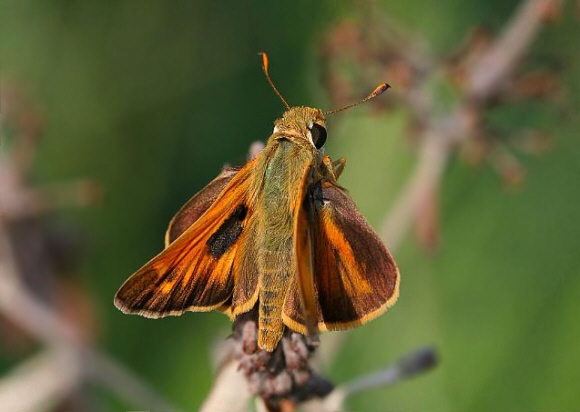
Introduction
There are at least 1040 known species of Grass Skippers (Hesperiinae) found in the neotropical region.
The genus Atalopedes comprises of 5 described species – bahiensis from south-east Brazil, flaveola from Venezuela and Colombia, carteri from the Bahamas, mesogramma from Cuba, and the most widely distributed species – campestris, which is found from the southern USA to Amazonia.
The male of campestris is easily recognized by virtue of the large black patch of androconia on the forewings. The female can be confused with Hesperia and other skippers, having dark earthy brown uppersides marked with a series of pale yellowish blotches. The underside is completely different to that of the male, with a pale olive-buff ground color, marked with a series of whitish spots that unite to form a large chevron across the outer half of the hindwings.

Habitats
This species is found in open grassy areas including meadows, pastures, roadside verges, parks and gardens, at altitudes between sea level and about 800m in subtropical regions. In recent years the species has expanded its range northwards, apparently in response to climate warming.
Lifecycle
The eggs, which are smooth, globular and greenish-white in color, are laid singly on or near the larval foodplants, which include Cynodon, Festuca, Stenotaphrum, Digitaria, Eleusine, Poa and probably several other genera of grasses. The caterpillars when tiny are yellowish green, with a black collar and a large shiny black head. When older they become pale brown with a thin dark dorsal line, and a black head. They hide by day at the base of grass tussocks, emerging at dusk to feed at the top of the grass blades.
Adult behavior
Males spend long periods perching on grass blades, dead flowerheads or low herbage, where they await passing females. Both sexes nectar at a wide variety of flowering plants including Verbena, Eupatorium, and thistles.
